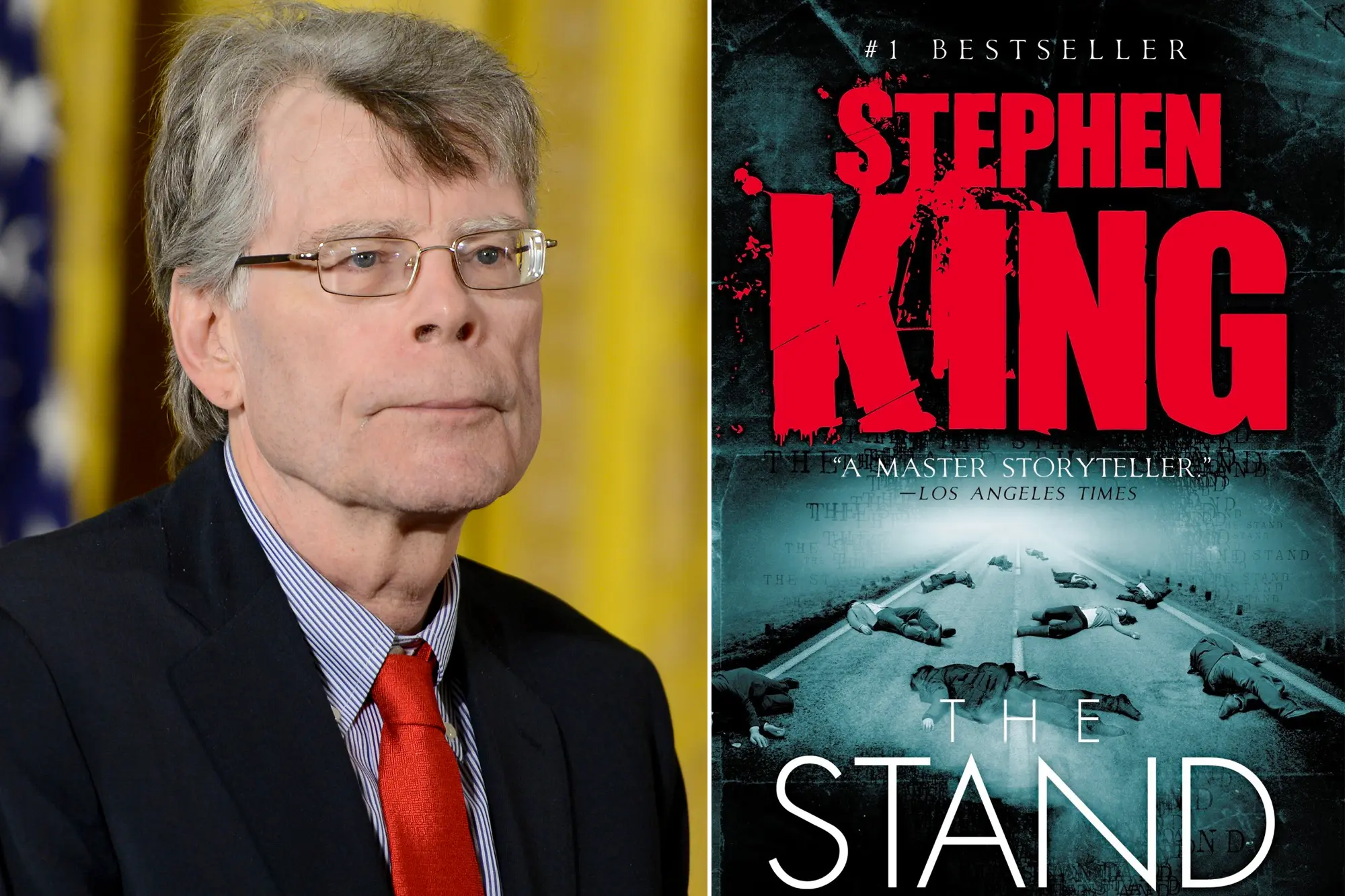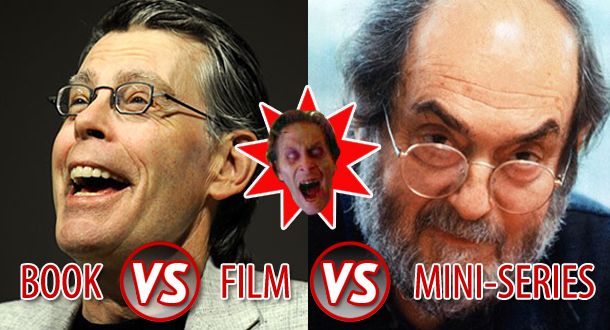The Ultimate Showdown: The Shining Movie vs. Miniseries - Which One Does Stephen King Prefer?
Stephen King's "The Shining" is a thrilling horror novel that has captured readers' imaginations since its release in 1977. It's the story of Jack Torrance an aspiring writer and recovering alcoholic who accepts a job as an off-season caretaker at the Overlook Hotel. With his wife and son Jack discovers that the hotel has a dark history and begins to unravel. This chilling tale has been adapted into a famous movie and a miniseries each offering a different take on King's story. These adaptations have become iconic in their own right inviting fans to explore the eerie world of the Overlook Hotel in various ways.
Comparing the movie and miniseries versions of "The Shining" is fascinating because they offer distinct interpretations of the same story. While both adaptations capture the essence of King's novel they differ in style focus and character development. These differences highlight how a single story can be told in multiple ways each resonating differently with audiences. Analyzing these versions provides insights into the art of adaptation and the impact of a director's vision on a story's portrayal.
The Shining Movie (1980)

Stanley Kubrick's 1980 film adaptation of "The Shining" is a masterpiece of horror cinema. It stars Jack Nicholson as Jack Torrance whose descent into madness is portrayed with intense and haunting performances. The movie is known for its atmospheric tension eerie soundtrack and iconic scenes like the "Here's Johnny!" moment. Kubrick's attention to detail and use of symbolism creates a sense of unease and ambiguity that has kept audiences discussing and dissecting the film for decades. Its visual storytelling and the chilling performance by Nicholson make it a classic in the horror genre.
The movie emphasizes visual storytelling and atmosphere over character development particularly in the portrayal of Jack's descent into madness and the eerie presence of the hotel itself. Some key elements from the book like the significance of the hotel's haunted past and the character development of Wendy and Danny are less explored. This interpretation led to a more ambiguous and open-ended story which has been both praised and critiqued by fans and critics alike.
The Shining Miniseries (1997)
The 1997 miniseries "The Shining" directed by Mick Garris offers a different approach to Stephen King's novel. With King himself writing the screenplay this adaptation stays closer to the book's narrative. The miniseries delves deeper into the backstory of the Torrance family and the Overlook Hotel giving viewers a more comprehensive understanding of the novel's themes and characters. It stars Steven Weber as Jack Torrance and Rebecca De Mornay as Wendy portraying a more nuanced and detailed exploration of their characters and the psychological effects of the hotel.
Unlike Kubrick's adaptation the miniseries follows the novel's plot more closely including key scenes and elements that the movie omitted. The tone is more faithful to King's vision with a greater focus on character development and the internal struggles of the Torrance family. The portrayal of Jack's character is more sympathetic depicting his battle with alcoholism and gradual descent into madness in line with the novel. The miniseries also explores the psychic abilities of Danny more thoroughly adding depth to the supernatural aspects of the story.
Faithfulness to the Source Material
The 1980 movie and 1997 miniseries of "The Shining" show different levels of staying true to Stephen King's novel. Stanley Kubrick's movie is more about the feel and look of the story. It changes some parts of the book especially how the characters grow and the story's details. The miniseries directed by Mick Garris sticks closer to what Stephen King wrote. It includes more details about the Torrance family's past and the way the characters think and feel. Each version shows the director's unique way of telling the same story.
In the movie by Kubrick the Overlook Hotel's evil and Jack's slide into madness are shown in a way that's really about creating a mood and tension. Wendy played by Shelley Duvall seems weaker and Danny's special powers aren't as important. But in the miniseries there's more about each character. Jack's struggle with drinking and his fight against the hotel's control are shown more like they are in the book.
Cinematic Style and Direction
The cinematic styles of Stanley Kubrick and Mick Garris in their adaptations of "The Shining" are strikingly different. Kubrick's approach is known for its cold symmetrical visual style with long steady camera shots that build a sense of unease. His attention to detail and symbolic use of color and architecture are legendary. In contrast Garris's miniseries offers a warmer more straightforward visual narrative. His direction is more closely aligned with traditional TV storytelling focusing more on character development and narrative clarity.
The cinematic choices made by Kubrick and Garris significantly impact the atmosphere and storytelling of "The Shining." Kubrick's version creates an atmosphere of psychological horror using visual symbolism and an unsettling soundtrack to enhance the sense of dread. Garris on the other hand leans towards a more conventional horror approach emphasizing clear narrative and character development which makes the story more accessible but perhaps less artistically enigmatic than Kubrick's rendition.
Reception and Critical Response
The reception of Kubrick's and Garris's adaptations of "The Shining" by audiences and critics varied greatly. Kubrick's film initially met with mixed reviews but eventually gained a reputation as a classic of the horror genre praised for its artistic vision and psychological depth. Garris's miniseries while more faithful to Stephen King's novel received a warmer reception from King's fans but did not achieve the same critical acclaim as Kubrick's version. Its reception was generally positive particularly for its storytelling and character development but it didn't leave the same lasting impact on the cinematic landscape.
In terms of cultural impact and legacy Kubrick's "The Shining" stands out as a monumental work in film history. Its iconic scenes innovative cinematography and ambiguous storytelling have influenced generations of filmmakers and become a staple of popular culture. The Garris miniseries while perhaps less revolutionary contributed to a deeper appreciation of Stephen King's work in the visual medium paving the way for more faithful adaptations of his books.
Stephen King's Perspective

Stephen King has been vocal about his opinions on the adaptations of "The Shining." He famously disapproved of Kubrick's interpretation feeling that it strayed too far from his novel particularly in its portrayal of the main character's descent into madness. King felt that Kubrick's version lacked the emotional depth and character development that he had intended. On the other hand King was much more favorable towards the Garris miniseries as it stayed true to the book's narrative and themes portraying the characters and story as he had envisioned them.
From King's perspective the Garris miniseries more accurately captures the essence of his novel "The Shining." He appreciated the miniseries for its faithfulness to his original story especially in its exploration of family dynamics and supernatural elements. In contrast King viewed Kubrick's film as a visually stunning but fundamentally different interpretation of his work one that sacrificed the heart of his story for stylistic and thematic changes.
In comparing Kubrick's film and the Garris miniseries "The Shining" key points of contrast emerge in their cinematic styles storytelling approaches and fidelity to the source material. Kubrick's film is artistically bold and psychologically complex while Garris's miniseries offers a more traditional and faithful adaptation of Stephen King's novel.
